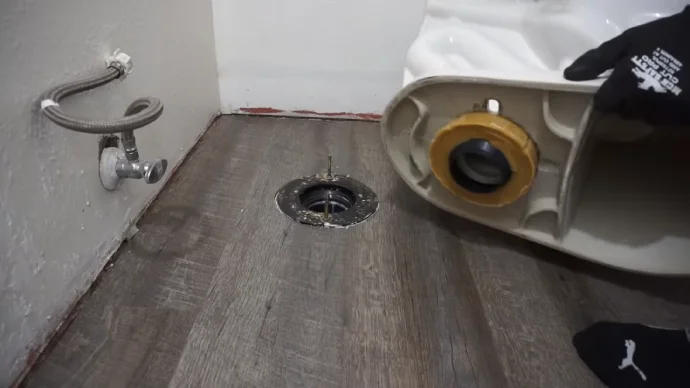Last Updated on August 28, 2023
Cleaning wax off a toilet flange is essential to replacing a toilet or maintaining its condition. The wax provides a seal between the toilet base flange and the floor and prevents germs from getting out.
When removing an old toilet or installing a new one, it is essential to know how to clean the wax off of the flange properly. You’ll need latex gloves, plastic putty knives, mineral spirits, and rags or paper towels for this.
After that, remove the toilet and wax ring from the floor and scrape away any remaining wax with a putty knife. To finish, you should use mineral spirits on a damp rag or paper towel to rub away any residue from both the putty knife and flange area before wiping up floors with freshly-soaked rags.
We’ll walk you through each step of wax removal, as well as provide some alternative cleaning methods to get the job done right.
How to Clean Wax Off Toilet Flange: Only 4 Steps

Step 1: Gather Necessary Supplies
The first step in getting wax out of a toilet flange is to gather the necessary supplies. This includes latex gloves, mineral spirits, a disposable plastic putty knife, and rags or paper towels.
Wearing protective gloves is essential when dealing with potential germs in the bathroom, so these should be put on before beginning any work.
The putty knife and mineral spirits will be used to scrape away old wax residue, while the rags or paper towels are for wiping down the area once the wax is removed.
Step 2: Removal of Toilet and Wax Ring
Once you have gathered the necessary supplies, it is time to take out the toilet and wax ring. First, put on latex gloves for extra protection from any germs that may be lurking around. Turn off the water supply line. Then use a wrench or pliers to unscrew the nut and bolt holding the toilet bowl down to the floor.
Carefully lift up and remove the toilet bowl from its position so you can access the old wax ring underneath it. Once you can see it clearly, use your finger or a putty knife to loosen it up and pull it out of place.
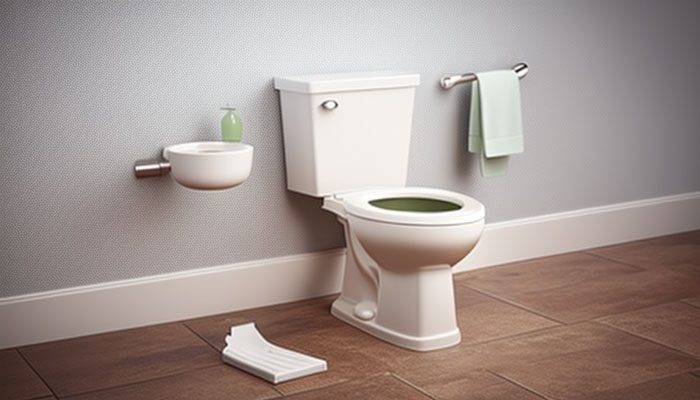
Step 3: Cleaning Away Wax Residue
Now that you have removed the wax ring, you can start cleaning away any remaining sticky wax residue from both the flange and the surrounding area. Take your disposable plastic putty knife and gently scrape away as much excess wax as possible without damaging any of the fixtures in your bathroom.
Next, take a rag or paper towel that has been dampened with mineral spirits and use it to rub away any residue left behind by your putty knife. Make sure not to miss any nooks or crannies where residue may be hiding.
Step 4: Finish Up
At this point, all that is left is one last step before finishing up; wiping down your floors with a freshly soaked rag and mineral spirits, so no residue is left behind.
Don’t forget to get into any hard-to-reach areas where wax may have splattered during removal. Once everything looks clean, let your floors dry completely before replacing your toilet bowl back in its original position with a new wax ring securely in place.
Other Methods of Cleaning Wax Off Toilet Flange
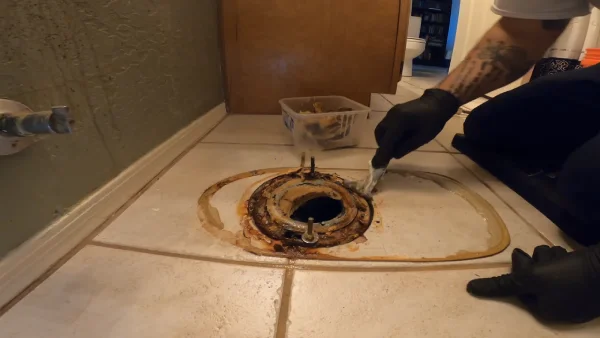
1. Using Adhesive Remover
Aside from using mineral spirits to clean wax off a toilet flange, another effective method is using an adhesive remover. Adhesive removers are specifically designed to dissolve and remove sticky substances such as wax, glue, tape, and more.
To use an adhesive remover, simply apply it directly onto the toilet flange with a clean cloth or brush and allow it to sit for 15-20 minutes. Once the time has elapsed, scrub the area with a brush or sponge until all of the wax has been removed.
2. Using Acetone
Another popular method for cleaning wax off toilet flanges is through the use of acetone, otherwise known as nail polish remover. This colorless liquid is highly volatile and very effective at dissolving many kinds of waxy substances, including most grades of paraffin waxes commonly used for toilet flange seals.
To apply acetone to a toilet flange wax seal, simply saturate a clean cloth or paper towel in acetone, then gently rub it over the affected area until all traces of wax have been removed. Be sure not to scrub too hard, as this can damage the porcelain surface surrounding the sealant area.
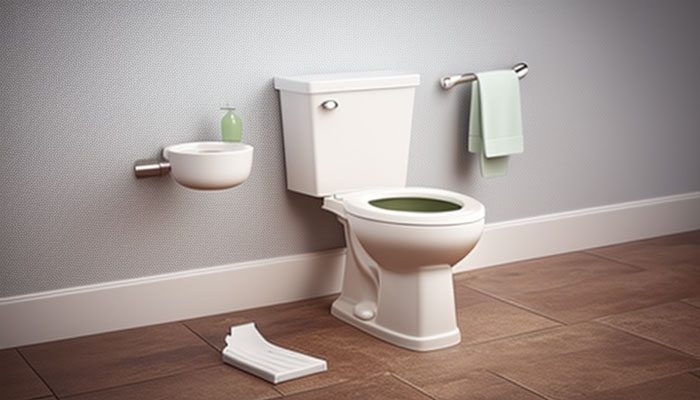
When using acetone, it’s important that you take proper safety precautions, such as wearing eye protection and rubber gloves while working and ensuring that you are working in well-ventilated areas where no sparks or flames are present (acetone is highly flammable).
Also, be aware that acetone can cause damage to other surfaces so always test a small inconspicuous area first before applying it directly onto your toilet flange sealant area.
In the end, discard any unused solution by following your local municipality guidelines on hazardous waste disposal before discarding any used containers properly in accordance with state regulations.
Will Hot Water Clean Wax from Toilet Flange?
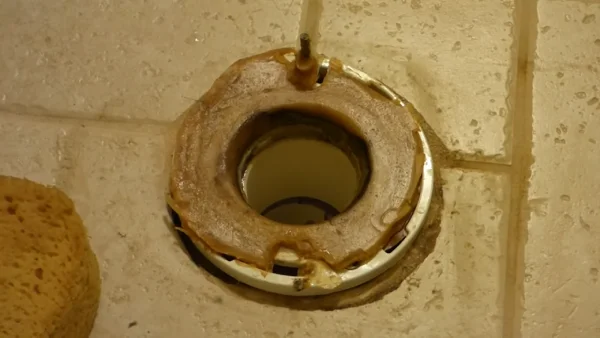
Using hot water to clean wax from a toilet flange can be an effective method for removing the material, but it is not without its risks.
When hot water is applied, it can cause the wax ring around the toilet to melt, and this could lead to potential leaks if not addressed.
The heat from the hot water may cause damage to certain components of the toilet itself, such as the porcelain finish or even plumbing fixtures. It is essential to exercise caution when using hot water for this purpose.
When considering whether or not to use hot water for cleaning off the wax from a toilet flange, it is important to identify what type of material makes up the flange in question.
Certain materials are more prone to damage from heat than others are and must consequently be handled with greater care.
For example, PVC and rubber flanges tend to melt easily due to their low melting point and should, therefore, not be exposed to temperatures that exceed 212°F. On the other hand, metal flanges may generally tolerate higher temperatures without issue.
The type of wax present on the fixture should also be considered when deciding how best to remove it.
Paraffin-based waxes are generally easier to remove using warm or hot water compared with synthetic waxes, which might require harsher solvents and vigorous scrubbing with a brush for them to come off properly.
Overall, while hot water can be used as an effective way of cleaning off a toilet flange’s wax layer under certain circumstances, there are some risks associated with this removal method, and utmost care should thus be taken when attempting it.
Does Vinegar Dissolve Toilet Flange Wax?
You can dissolve toilet flange wax with vinegar. Vinegar contains acetic acid, which helps break down waxy substances like candle wax or paraffin. Vinegar also has antibacterial properties, which make it an ideal cleaning agent for bathrooms and other germ-laden areas around the home.
To use vinegar for dissolving your toilet flange wax, first mix one part white distilled vinegar with two parts warm water in a bucket or spray bottle. Then apply the solution directly onto your toilet flange.
Let it sit for 10-15 minutes before scrubbing it with a sponge or brush until all traces of residue have been removed from your flooring surface.
How Often Do You Replace Toilet Wax Rings?
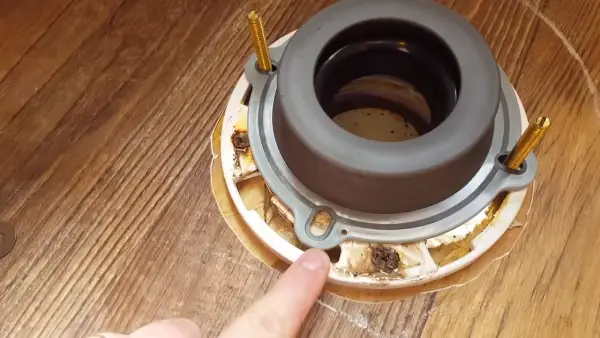
The lifespan of your toilet wax ring largely depends on how well it is installed and maintained over time. In general, if properly installed and cared for, a high-quality toilet wax ring will last anywhere from 10-30 years before needing any kind of replacement or repair work.
If there are any signs of cracking, crumbling, or warping at any point during its lifespan, you should replace it immediately, as these defects could lead to costly leakage issues down the line.
Return Your Toilet Flange to Shining Splendor
Keeping your toilet flange clean is essential for the proper functioning of any bathroom. Following the steps outlined above, you can safely and effectively remove stubborn wax build-up from your flange.
Remember to use caution when handling chemicals such as mineral spirits and acetone, and always wear protective gloves when scraping or scrubbing at the surface with materials like putty knives or rags.
By taking these simple precautions, you can make sure that your toilet remains in top condition. So don’t delay, start cleaning today.

